Dogs have long earned their place as beloved companions, but some breeds go beyond cuddles and commands; they’re the intellectuals of the canine world. These intelligent working dogs are celebrated not just for their loyalty but for their exceptional mental sharpness, problem-solving skills, and impressive ability to learn and adapt quickly. Whether assisting in rescue operations, guiding the visually impaired, or herding livestock, these breeds display an intelligence that’s both practical and profound.
But intelligence in dogs isn’t just about following orders. In fact, some of the smartest dogs are the most independent thinkers, capable of making decisions, adapting to new challenges, and even outsmarting their owners. This mental agility can sometimes be a double-edged sword, especially for new dog owners unprepared for such clever behavior. These brainy breeds may figure out how to unlatch gates, swipe treats from counters, or creatively escape boredom.
Classified by kennel clubs under the “working group,” these dogs were bred with a purpose. While not all still perform their traditional roles, their keen instincts and trainability make them standout candidates for modern tasks, from therapy and detection work to loyal family protectors.
Intelligent Working Dog Breeds
1. Doberman Pinscher
Few breeds match the Doberman Pinscher when it comes to intelligence paired with physical prowess. Originally developed in 19th-century Germany for protection and law enforcement, Dobermans have evolved into highly capable working dogs valued for their quick thinking and sharp instincts. PetMD describes the Doberman Pinscher as a lively, watchful, and devoted breed.
They excel in demanding roles such as police and military work, therapy, and service work. They are one of the smartest dog breeds. Their alert nature and deep loyalty also make them excellent family protectors, though early training and socialization are key to balancing their strong protective instincts.
Training
Dobermans thrive under structured, consistent training that challenges both their bodies and minds. Positive reinforcement works best, especially when combined with plenty of exercise and mental stimulation.
Without a job or sufficient engagement, these energetic dogs can become bored and destructive. It’s also important to teach impulse control, particularly because of their strong prey drive, which can lead them to chase smaller animals if not managed properly.
Fun Fact: Doberman Pinschers continue to serve in modern K-9 units and are considered among the world’s top protection and service dogs.
2. Rottweiler
The Rottweiler is a powerful and intelligent breed with a long history of working alongside humans. The AKC states that the powerful and sturdy Rottweiler traces its ancestry back to the herding dogs of ancient Rome.
Rottweilers have evolved into versatile working dogs known for their strength, loyalty, and sharp minds. Their mental acuity and eagerness to please make them an ideal fit for the category of intelligent working dog breeds, particularly when raised in active homes that value discipline and structure.
Training
Training a Rottweiler is as much about consistency as it is about early engagement. These dogs learn quickly with a strong desire to bond with and protect their people, but they need firm, fair leadership from the start. Positive reinforcement, paired with early socialization and regular mental stimulation, like puzzle toys or structured activities, helps develop a confident, well-mannered companion.
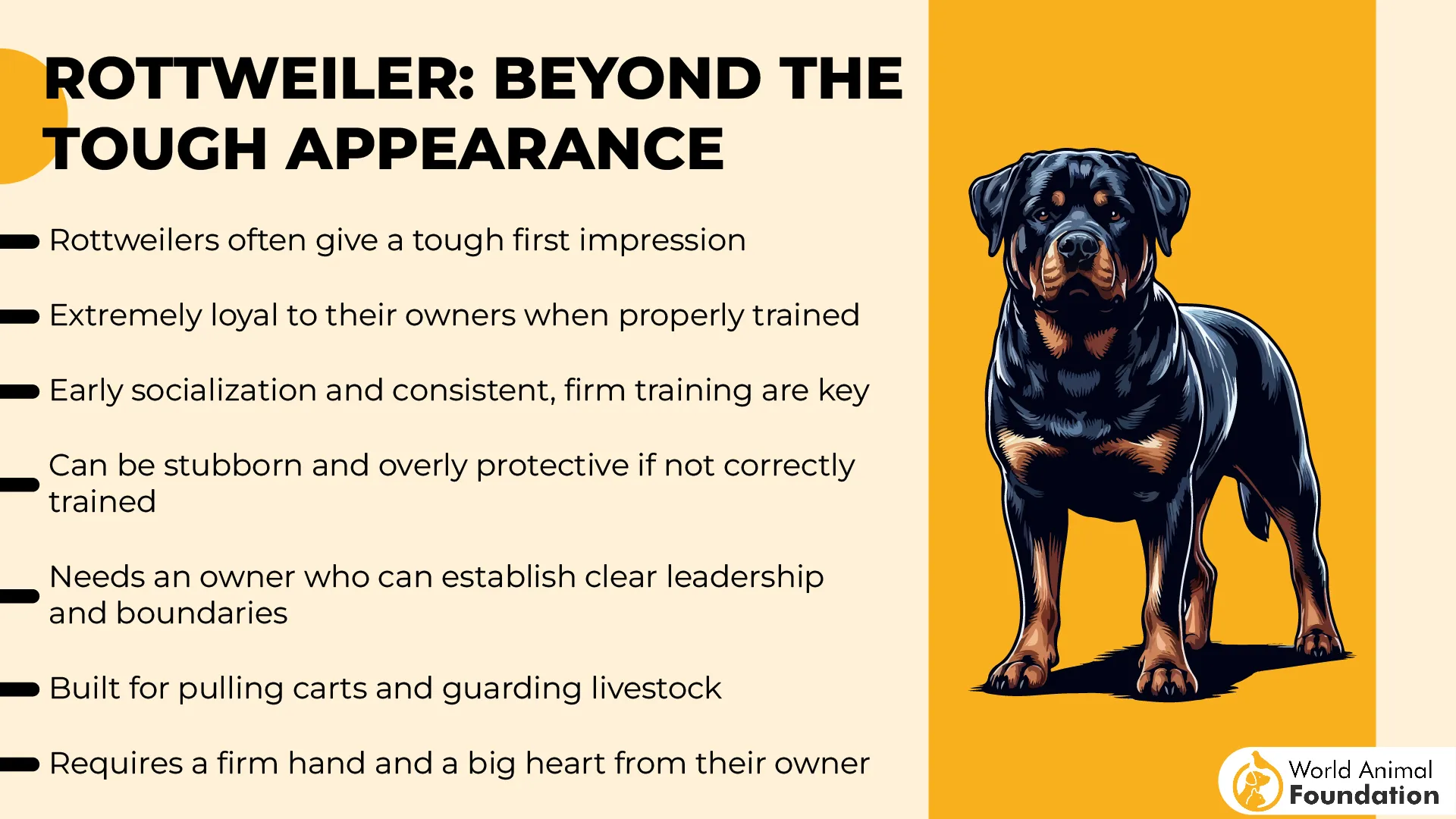
Rottweilers don’t thrive in isolation; they crave human connection and daily learning experiences. While their intelligence makes them highly trainable, some may show stubbornness, so owners should commit to calm, consistent discipline and avoid rough play that may encourage unwanted behaviors.
Fun Fact: Rottweilers were among the first breeds used as guide dogs for the blind.
3. Labrador Retriever
The Labrador Retriever is one of the most recognizable and beloved working breeds in the world, and for good reason. While their reputation often centers on their friendly, outgoing nature, Labs are also remarkably intelligent.
Originally bred for retrieving game during hunts, they’ve maintained a natural ability to follow cues, solve problems, and work closely with humans. Purina reports that the Labrador Retriever was developed to be both a dependable worker and a friendly companion, making it a perfect choice for those seeking a loyal and smart pet.
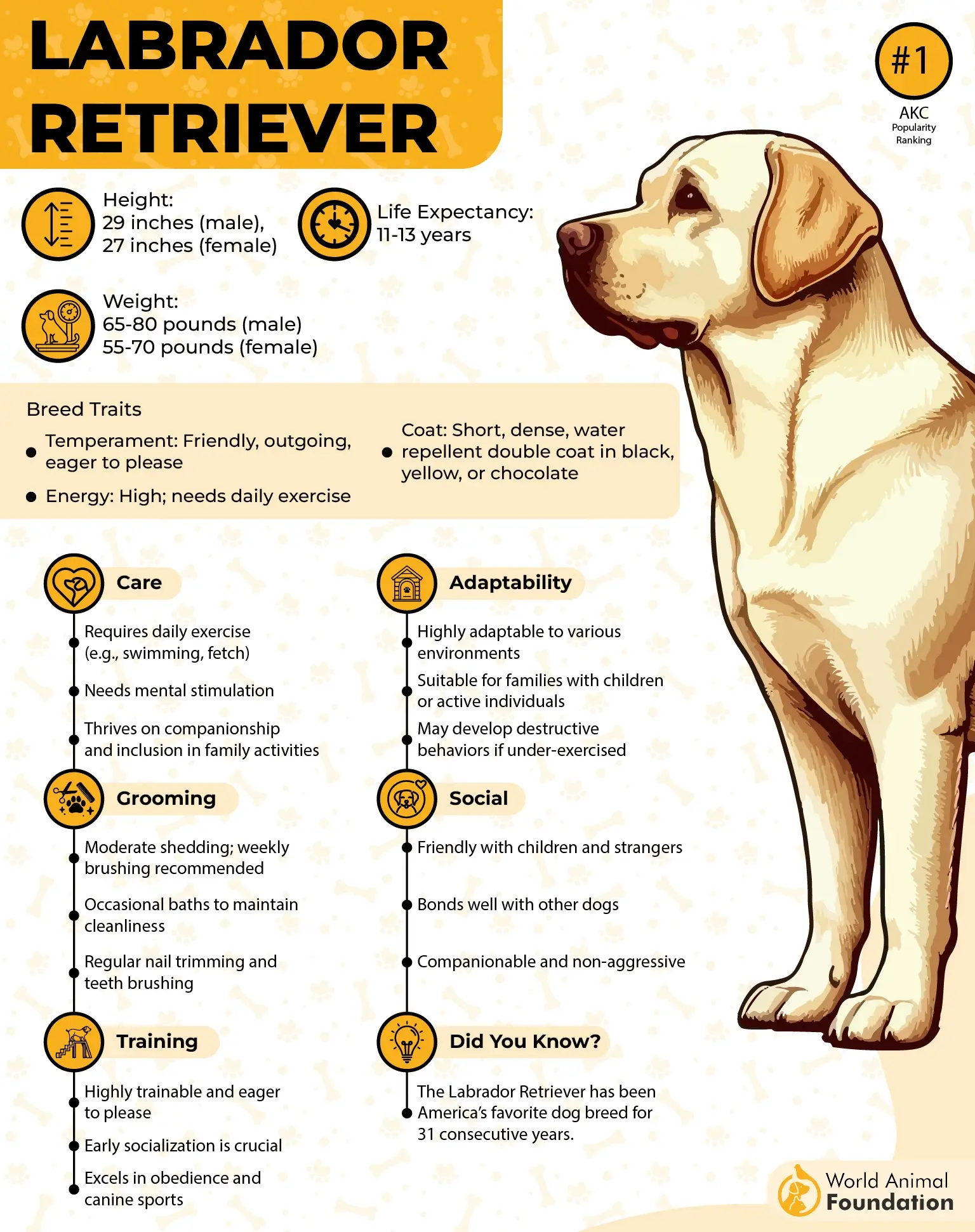
Training
Labradors are highly motivated learners who respond well to consistent, positive reinforcement. Their strong desire to please and sociable temperament make them ideal for obedience training, service roles, and advanced tasks like scent work or agility. However, their energy and enthusiasm can get the better of them without structured training from an early age.

They thrive in environments where they receive mental stimulation alongside physical exercise and active family involvement are perfect outlets. Regular training not only curbs unwanted behaviors like overeating or excessive jumping but also deepens their bond with their handlers, reinforcing their working instincts in a home setting.
Fun Fact: Labs are natural retrievers and excel in tasks involving fetch, especially when using tools like the Chuckit! Ball Launcher.
4. German Shepherd
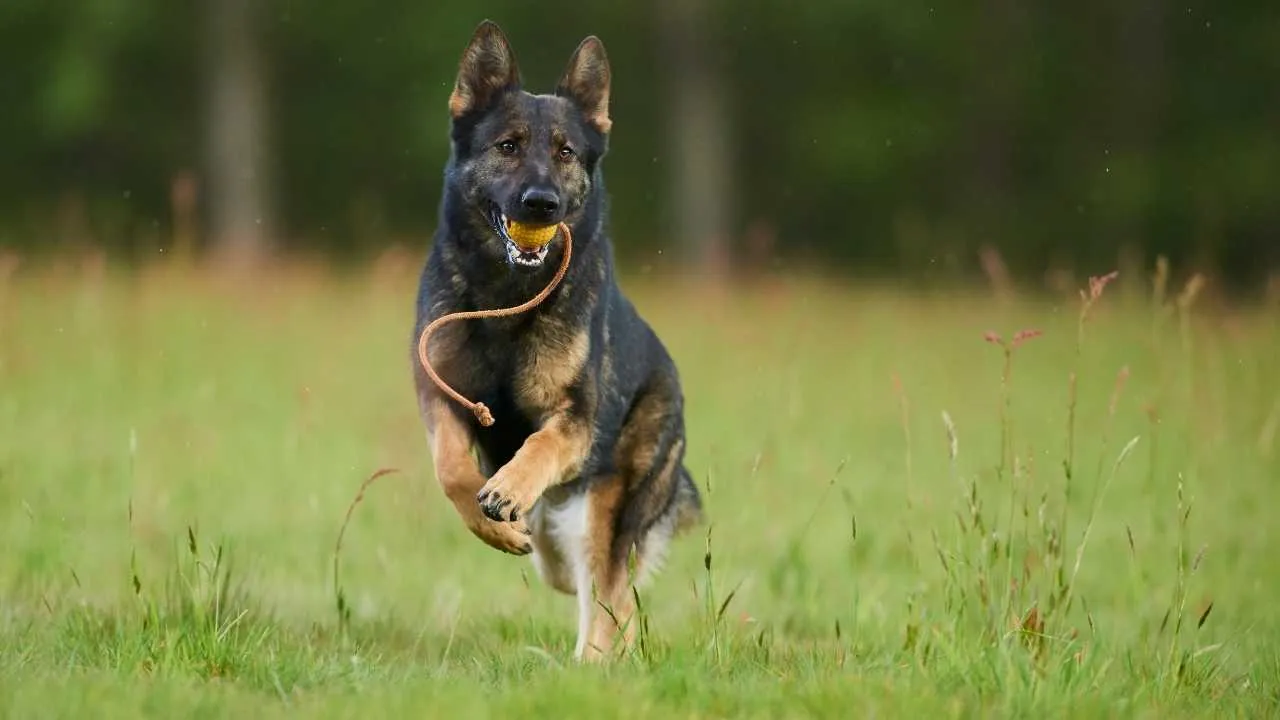
Renowned for their sharp minds and unshakable work ethic, German Shepherds are the gold standard among intelligent working dog breeds. Bred originally for herding, these dogs have adapted seamlessly into roles that demand focus, resilience, and problem-solving skills.
Britannica notes that the German Shepherd, known for its intelligence, vigilance, and devotion, is commonly employed as a guard dog, guide for the visually impaired, and in police and military work. Their intelligence is paired with a deep-rooted loyalty, making them not only exceptional workers but also vigilant and protective family companions.
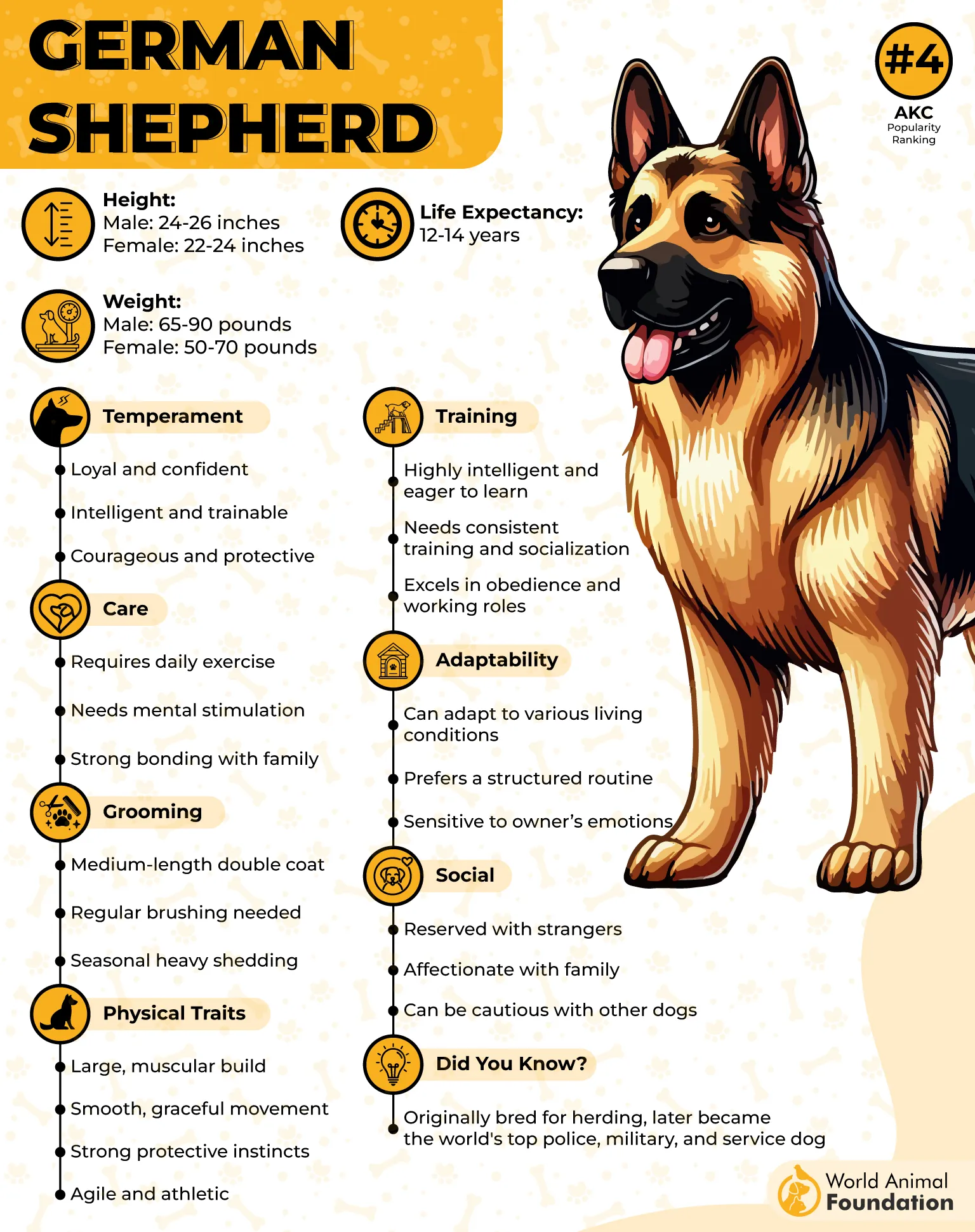
Training
Training this herding group is both a rewarding and essential part of ownership. They also have a strong personality that requires firm and consistent leadership. Early socialization and obedience training help prevent misdirected protective instincts, especially in homes with other pets or children.
German Shepherds thrive in environments where they are given structure, purpose, and mental stimulation. Without regular training and engagement, their natural drive may lead to dominant or even aggressive behavior, making early guidance crucial.
Fun Fact: German Shepherds are one of the most commonly used breeds in police, military, and service work due to their intelligence, versatility, and loyalty.
5. Bloodhound
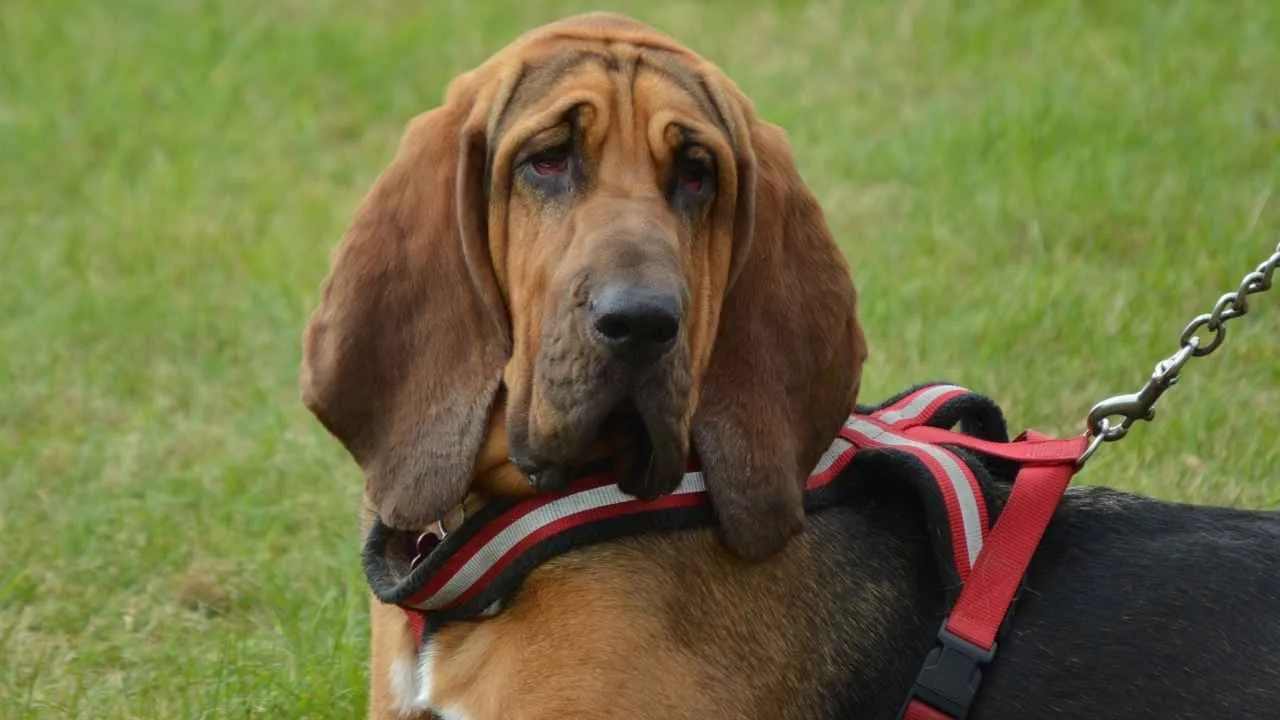
The Bloodhound is a scent-tracking marvel whose olfactory abilities are unmatched. With their signature droopy ears, wrinkled skin, and soulful eyes, Bloodhounds are far more than just endearing, they’re highly skilled trackers used for centuries to locate lost individuals, fugitives, and even avalanche victims.
Their legendary sense of smell and relentless drive make them indispensable in search and rescue work, where focus and endurance are crucial. While they’re affectionate and gentle companions at home, their instincts are always alert.
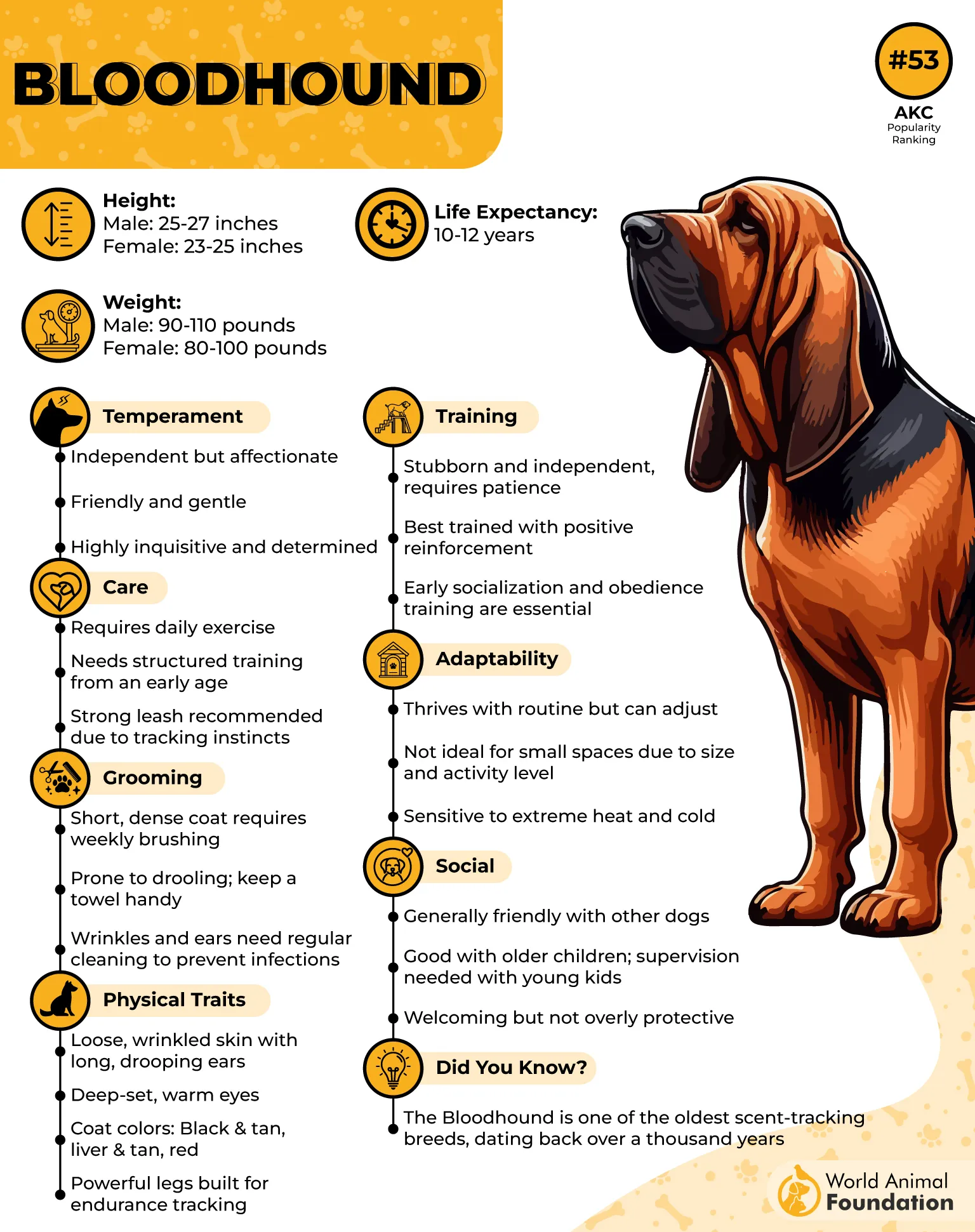
Training
Training a Bloodhound requires patience, consistency, and creativity. These dogs are intelligent but notoriously independent, especially when following a scent, sometimes for over 100 miles. They respond best to reward-based methods but may struggle with off-leash reliability due to their intense prey drive.
Early socialization and firm yet gentle leadership are key to shaping a well-behaved Bloodhound. Due to their curiosity and escape-prone nature, secure environments and mental stimulation are essential during training.
Fact: Bloodhounds are famous for their ability to track scents across vast distances and have been known to follow a trail for up to 130 miles with unwavering determination.
6. Golden Retriever
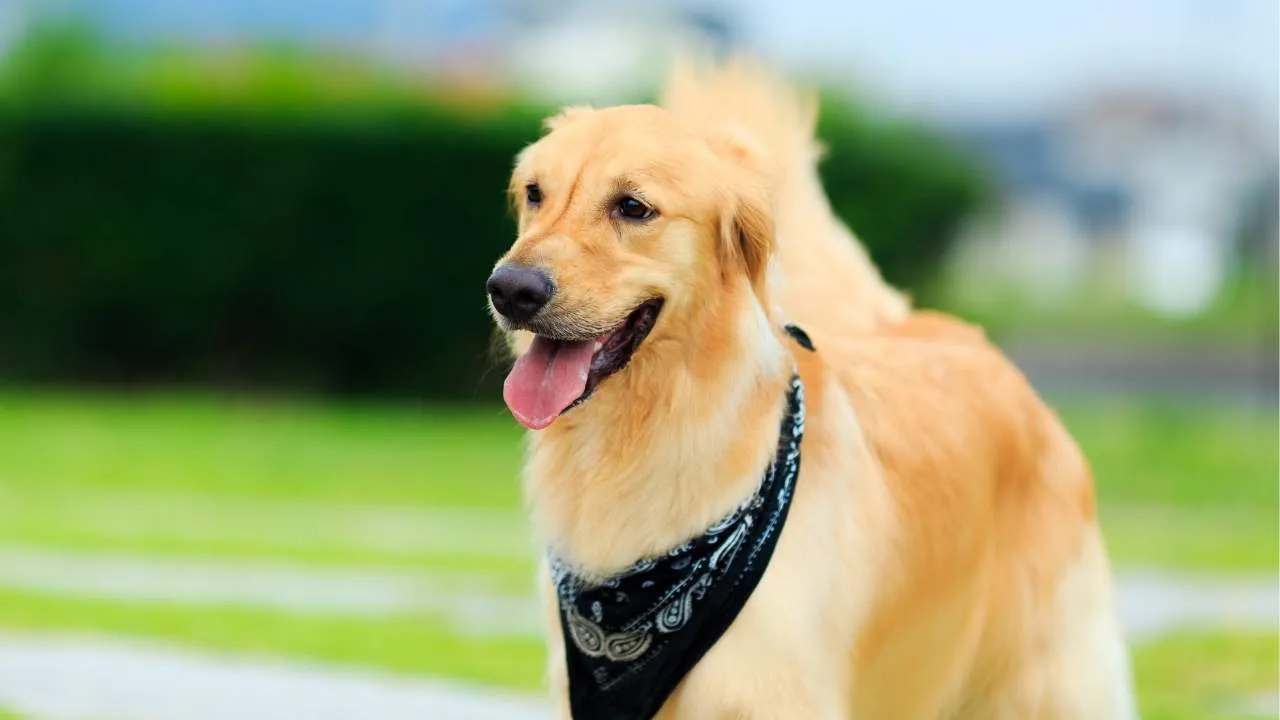
Golden Retrievers are widely celebrated not just for their friendly demeanor but also for their remarkable intelligence and versatility in working roles. These dogs’ intelligence, combined with reliable temperament and eagerness to please, make them exceptionally intelligent working dog breeds.
From service dog duties to therapy visits to hunting and retrieving, Goldens adapt effortlessly to a variety of tasks. Their sturdy build, paired with a lush golden coat and constant smile, adds to their comforting and approachable presence, traits that make them favorites in support and care-related work.
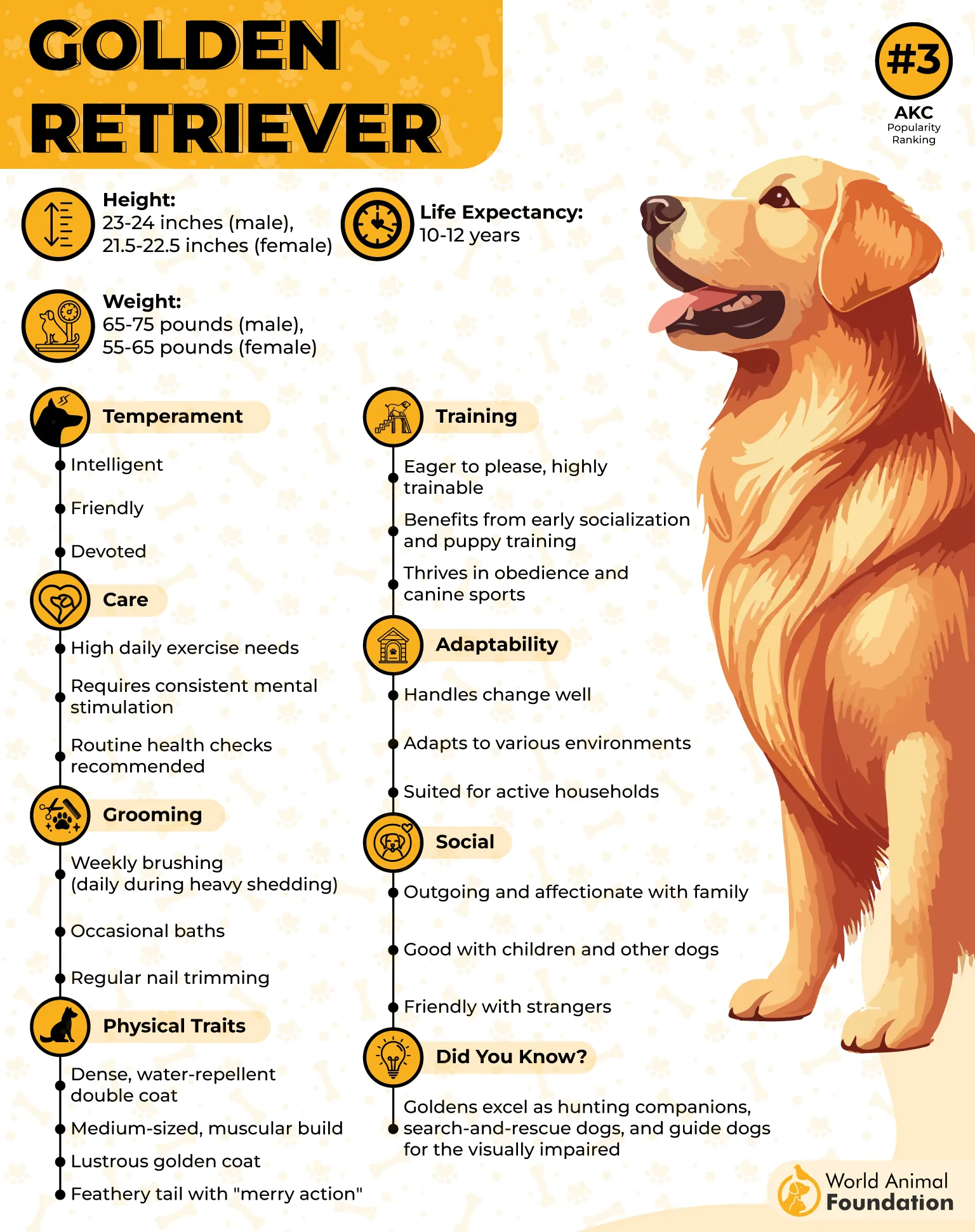
Training
Golden Retrievers are highly trainable thanks to their sharp minds, gentle nature, and strong desire to please. These dogs thrive when given tasks and structure, responding especially well to positive reinforcement, particularly if treats are involved.
Because they’re so people-oriented, Goldens benefit from early socialization and puppy classes to help build confidence and manners from a young age. Their outgoing personalities make training feel more like play, and their loyalty means they form strong bonds with their handlers. Whether mastering basic obedience or complex service commands, Golden Retrievers are consistent performers eager to do their best.
Fun Fact: Golden Retrievers are not only excellent service dogs, they’re also one of the most popular therapy dogs thanks to their affectionate, dependable nature.
7. Border collie
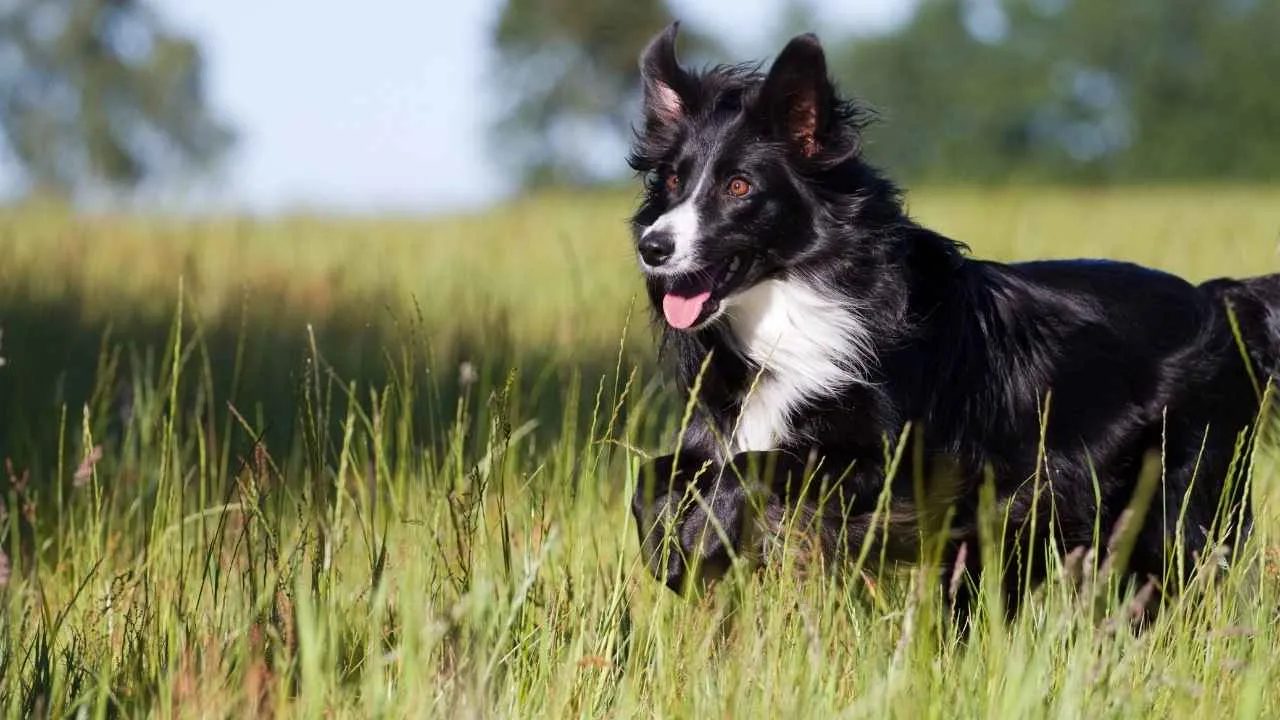
Renowned for their lightning-fast intelligence and relentless drive, they are among the smartest breeds in the dog world. Originally bred to herd livestock, they possess a rare combination of instinct, focus, and mental agility that allows them to problem-solve on the fly.
Whether rounding up sheep or dazzling in agility competitions, these dogs are happiest when their minds are as engaged as their bodies. Their loyalty, energy, and work ethic make them a favorite among farmers, trainers, and active families alike.
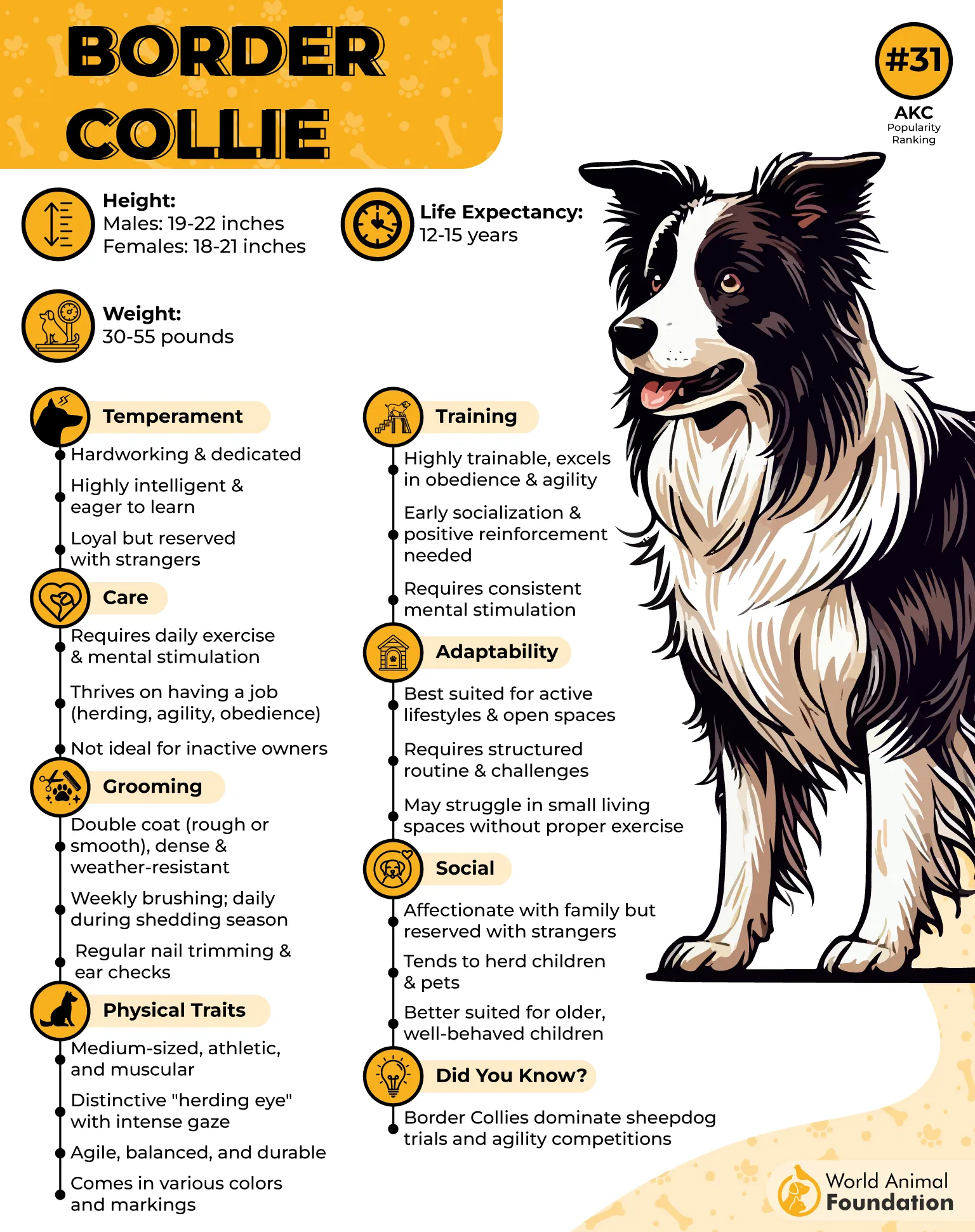
Training
Training a Border Collie is less about teaching commands and more about channeling their natural brilliance. These dogs thrive with structure and variety, quickly mastering complex cues and responding to over 200 words in some cases, like the famous Border Collie, Rico. Positive reinforcement is essential, as they are highly sensitive and respond best to encouragement.
Without regular mental stimulation and physical outlets, their boundless energy can lead to behavioral challenges. Agility courses, advanced obedience, and interactive puzzle games are ideal for keeping them sharp, fulfilled, and well-behaved.
Fun Fact: This intelligent dog breed is such a fast learner that some can recognize and respond to more than 200 words, making it one of the most trainable breeds in the world.
Conclusion
When it comes to canine intelligence, few breeds rival the sharp instincts, quick learning, and high energy seen in the world’s top intelligent working dog breeds. From the focused Doberman Pinscher to the exceptionally quick-learning Border Collie, these dogs don’t just follow commands; they anticipate them, adapt to challenges, and excel in environments that demand both brainpower and endurance. Their remarkable performance in tasks like search and rescue, protection, and obedience competitions underscores just how valuable their intelligence can be when properly nurtured.
Breeds like the Australian Cattle Dog and Shetland Sheepdog are prime examples of herding dogs whose alertness and drive make them both reliable workers and loyal companions. Similarly, the Miniature Schnauzer and English Springer Spaniel combine trainability with eagerness to please, making them versatile members of the working group. Each of these breeds is recognized by the American Kennel Club for its mental sharpness and strong work ethic, and they shine brightest when given tasks that challenge their abilities.
Choosing an intelligent working breed means committing to engagement, structure, and ongoing stimulation. In return, you’ll gain a devoted companion capable of learning quickly, performing exceptionally, and becoming an integral part of any task-driven lifestyle.


